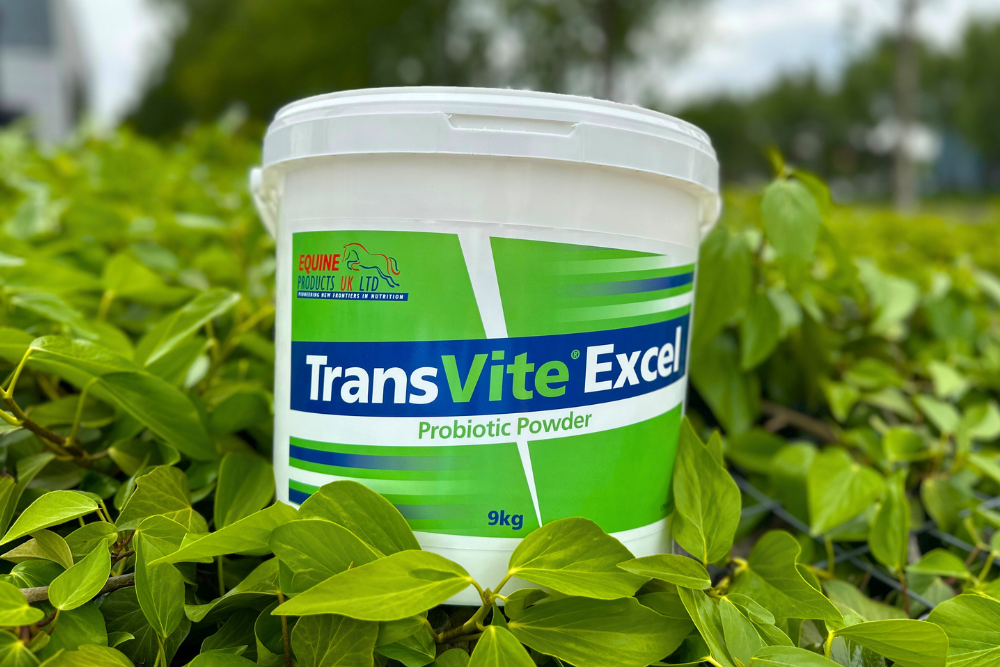Pre and Probiotics - What? When? How?

Written by Briony Witherow MSc RNutr. FHEA
This month’s blog is all about pre and probiotics; what they are, when to use them and how they work.
Pre and probiotics are commonly referred to as digestive enhancers and are available either individually or in combination (known as synbiotics). Pre and probiotics primarily target the horse’s hindgut which hosts a population of microbes which are responsible for the digestion of fibre. The horse depends on this population to be able to digest and utilise nutrients from the forage portion of his diet. These microbes become accustomed to breaking down specific feedstuffs, so when the diet changes, the microbial population must shift to reflect this. Research suggests that this adaptation can take as long as 3 to 4 weeks (depending on how large the difference is between diets). If change occurs too quickly, microbes struggle to cope, resulting in digestive disturbance. If the microbial population is compromised, the horse’s ability to digest fibre is reduced. Any cause of digestive disruption, whether that be stress, persistent loose manure, a bout of colic, or laminitis, can upset the finely tuned balance of these vital organisms. As such, digestive supplements that target the hindgut arguably should have a place in every horse owner’s feed room on standby to provide additional support where needed.
Probiotics: What are they?
The term probiotic refers to a dietary supplement containing live microbes that has the potential (when provided in adequate quantities) to enhance the health of the digestive tract, and in doing so, potentially the health of the recipient (Schoster, et al., 2014; FAO/WHO, 2002). Within the equine feed industry, this definition has expanded to include live yeast.
At present, there are no live bacteria products registered for use in equine feed or supplements in the UK and Europe. However, there are four strains of live yeast (Saccharomyces cerevisiae) permitted for use in the EU (Saccharomyces cerevisiae CBS 493.94; Saccharomyces cerevisiae CNCM I‐4407; Saccharomyces cerevisiae CNCM I‐1077; Saccharomyces cerevisiae MUCL 39885 (EU Commission, 2021).
How do they work?
Live yeast supplementation helps create a more favourable hind gut environment and to repopulate the hindgut with beneficial fibre digesting microbes, indirectly improving fibre digestion. It should be noted that there is no evidence at present that providing live yeast to horses with a healthy microbial population will have any further beneficial effect.
When to Feed and How much is Effective?
- After a digestive upset (like colic or a period of loose manure) to help re-establish the microbial population.
- During or after a sudden dietary or management change
- To support horses in poor condition or at risk of increased stress through illness, injury.
Digestive supplements consisting primarily of probiotics are typically designed to be fed shorter-term after any event which has disturbed the hindgut’s microbial population.
Definitive recommendations on quantity per day are likely to differ between individual horses, clinical issue encountered, type of probiotic used, whether this is in combination with other probiotic ingredients and whether it is protected (to ensure delivery to the hindgut). A starting point suggested by research is 1x109 – 1x1011 colony forming units (cfu) per 50kg BW per day.
Prebiotics: What are they?
Prebiotics are a non-living feed ingredient which help to encourage the proliferation of existing useful microbes and can help support the microbial population during changes in feed and management; dead yeast are included in this definition. Examples of prebiotics include fructooligosaccharides (scFOS) and mannan-oligosaccharides (MOS).
When to feed and how much is effective?
While probiotics are generally recommended for shorter term use, products containing primarily prebiotics are often recommended to be fed over longer periods of time. Prebiotics are commonly recommended before and during stressful events/periods that may impact the gut and may also be used as a preventative measure, for example for those with digestive sensitivity during seasonal changes or for horses fed high-starch rations.
Much like probiotics, definitive recommendations on amount to feed per day are varied and, in some cases, extrapolated from other species. These are also likely to vary depending on the situation and horse, along with the product and its formulation.
Visit our Digestion & Gut Nutrition section on our website to find out more about our range and pre & probiotics
